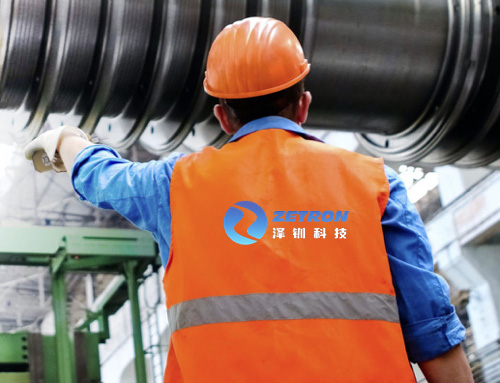
News
Beijing Zetron Technology Co., Ltd
How to operate more safely when work in underground shaft?
Source:
Beijing Zetron Technology Co., Ltd
Popularity:232
Time:2022/08/04 16:43:03
【
small
middle
big】
Summer is the high accident period, in the city underground shaft operations, toxic and harmful gases, flammable and explosive gases to the city grassroots workers bring no small trouble. Underground shaft entrances and exits are narrow and poorly ventilated, so if the human body inadvertently inhales too high a concentration of toxic gases, it is easy to cause poisoning accidents. In order to ensure the safety of personnel, underground environmental gas detection is required before going down the well operation.
 Temporary operations
"Portable or mobile instruments should be selected when monitoring is required for areas of temporary operations and where there is a risk of flammable or toxic gases or vapors from temporary operations in the area."
"Toxic priority"
"The equipment of portable instruments should follow the principle of 'toxic priority', and when there is a risk of multiple toxic gas leaks in the production workplace at the same time, a portable multi-gas detection alarm or a variety of single-gas portable instruments should be selected at the same time."
This is the document "Regulations for the Safe Use and Maintenance of Gas Detection and Alarm Instruments" issued by the China Chemical Safety Association on February 14 of this year, which provides a systematic overview of issues in gas detection.
Generally speaking, what toxic and hazardous or combustible gases are present in underground well tunnels?
Temporary operations
"Portable or mobile instruments should be selected when monitoring is required for areas of temporary operations and where there is a risk of flammable or toxic gases or vapors from temporary operations in the area."
"Toxic priority"
"The equipment of portable instruments should follow the principle of 'toxic priority', and when there is a risk of multiple toxic gas leaks in the production workplace at the same time, a portable multi-gas detection alarm or a variety of single-gas portable instruments should be selected at the same time."
This is the document "Regulations for the Safe Use and Maintenance of Gas Detection and Alarm Instruments" issued by the China Chemical Safety Association on February 14 of this year, which provides a systematic overview of issues in gas detection.
Generally speaking, what toxic and hazardous or combustible gases are present in underground well tunnels?
 Toxic/combustible gases in well tunnels:
01、Methane (CH4)
A common methane gas component is methane, a gas that can cause asphyxiation and explosions. It is non-toxic to humans when the concentration is low, while once the concentration is too high, reaching 25-30%, it can cause symptoms such as dizziness, weakness, rapid breathing and heartbeat, and ataxia. (When the concentration reaches 5%-15%, it will explode when it meets the fire source)
02、Hydrogen sulfide (H2S)
Hydrogen sulfide at low concentrations, colorless, with rotten egg smell, easily soluble in water. When the concentration is high, the human olfactory nerve poisoning paralysis, but can not smell. It should be noted that hydrogen sulfide is highly toxic, with low concentrations acting as excitement and high concentrations acting as inhibition, causing coma, respiratory center and vasomotor center paralysis. (Explosive when concentration reaches 4.3%-46%)
03、Carbon monoxide (CO)
Carbon monoxide gas is colorless, odorless, and combustible. The degree of poisoning is related to the concentration of the gas, the duration of poisoning, the respiratory rate and the individual's physique, and the mucous membrane and skin of the poisoned person appear cherry red.
04、Ammonia gas (NH4)
Ammonia gas is colorless, has an irritating odor, and will burn the mucous membranes of human skin, eyes, and respiratory organs. If inhaled in excessive amounts, it can cause swelling of the lungs and even death.
05、Sulfur dioxide (SO2)
Sulfur dioxide is colorless, has a strong sulfur odor and an acidic smell, and is the most dense of the gases in the shaft, accumulating at the bottom. This gas is also known as "blind gas" and is irritating to the eyes because it produces sulfuric acid when it meets water.
Combustible/toxic gases in the shaft are some of the common gases in accidents, which seem to be scary but are controllable.
Five elements of safety
01、Ventilation first, then detection, then operation
When working under the shaft or other restricted spaces, the principle of "ventilation first, then testing, then work" should be strictly enforced, and staff are strictly prohibited from entering the space without ventilation or testing.
02、Take reliable isolation measures
Partition (isolation) measures are necessary to isolate the restricted space from other pipes or spaces that may endanger safe operations.
03、Electrical equipment should be explosion-proof
Electrical equipment mainly refers to lighting equipment, many gas detonation conditions only almost fire source, so the relevant electrical equipment should meet the explosion-proof needs.
04、All kinds of equipment should be complete
Common equipment are: isolated protective masks, anti-static overalls (acid and alkali space should wear anti-acid and alkali overalls), work shoes, explosion-proof type tools (lighting).
05、Set up eye-catching safety signs
Safety signs mainly play a warning role, it is necessary to set up signs at the entrances and exits of restricted spaces to inform operators in advance of the existence of risk factors at the location.
Toxic/combustible gases in well tunnels:
01、Methane (CH4)
A common methane gas component is methane, a gas that can cause asphyxiation and explosions. It is non-toxic to humans when the concentration is low, while once the concentration is too high, reaching 25-30%, it can cause symptoms such as dizziness, weakness, rapid breathing and heartbeat, and ataxia. (When the concentration reaches 5%-15%, it will explode when it meets the fire source)
02、Hydrogen sulfide (H2S)
Hydrogen sulfide at low concentrations, colorless, with rotten egg smell, easily soluble in water. When the concentration is high, the human olfactory nerve poisoning paralysis, but can not smell. It should be noted that hydrogen sulfide is highly toxic, with low concentrations acting as excitement and high concentrations acting as inhibition, causing coma, respiratory center and vasomotor center paralysis. (Explosive when concentration reaches 4.3%-46%)
03、Carbon monoxide (CO)
Carbon monoxide gas is colorless, odorless, and combustible. The degree of poisoning is related to the concentration of the gas, the duration of poisoning, the respiratory rate and the individual's physique, and the mucous membrane and skin of the poisoned person appear cherry red.
04、Ammonia gas (NH4)
Ammonia gas is colorless, has an irritating odor, and will burn the mucous membranes of human skin, eyes, and respiratory organs. If inhaled in excessive amounts, it can cause swelling of the lungs and even death.
05、Sulfur dioxide (SO2)
Sulfur dioxide is colorless, has a strong sulfur odor and an acidic smell, and is the most dense of the gases in the shaft, accumulating at the bottom. This gas is also known as "blind gas" and is irritating to the eyes because it produces sulfuric acid when it meets water.
Combustible/toxic gases in the shaft are some of the common gases in accidents, which seem to be scary but are controllable.
Five elements of safety
01、Ventilation first, then detection, then operation
When working under the shaft or other restricted spaces, the principle of "ventilation first, then testing, then work" should be strictly enforced, and staff are strictly prohibited from entering the space without ventilation or testing.
02、Take reliable isolation measures
Partition (isolation) measures are necessary to isolate the restricted space from other pipes or spaces that may endanger safe operations.
03、Electrical equipment should be explosion-proof
Electrical equipment mainly refers to lighting equipment, many gas detonation conditions only almost fire source, so the relevant electrical equipment should meet the explosion-proof needs.
04、All kinds of equipment should be complete
Common equipment are: isolated protective masks, anti-static overalls (acid and alkali space should wear anti-acid and alkali overalls), work shoes, explosion-proof type tools (lighting).
05、Set up eye-catching safety signs
Safety signs mainly play a warning role, it is necessary to set up signs at the entrances and exits of restricted spaces to inform operators in advance of the existence of risk factors at the location.
Time:2022/08/04 16:43:03
Return
Product
selection
Here are all the products you want
Search for matching products
More products






